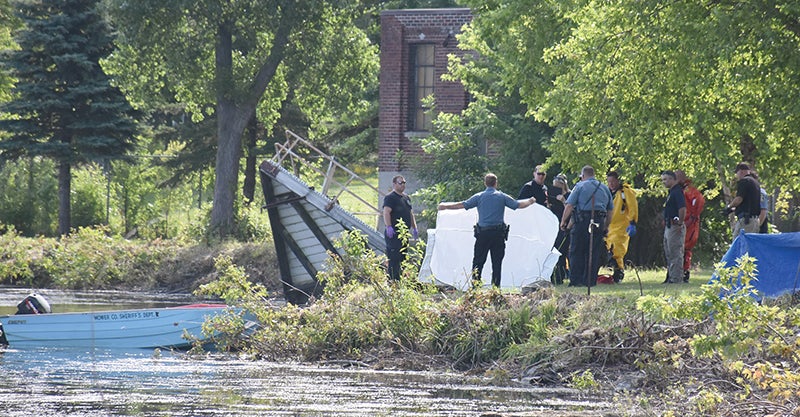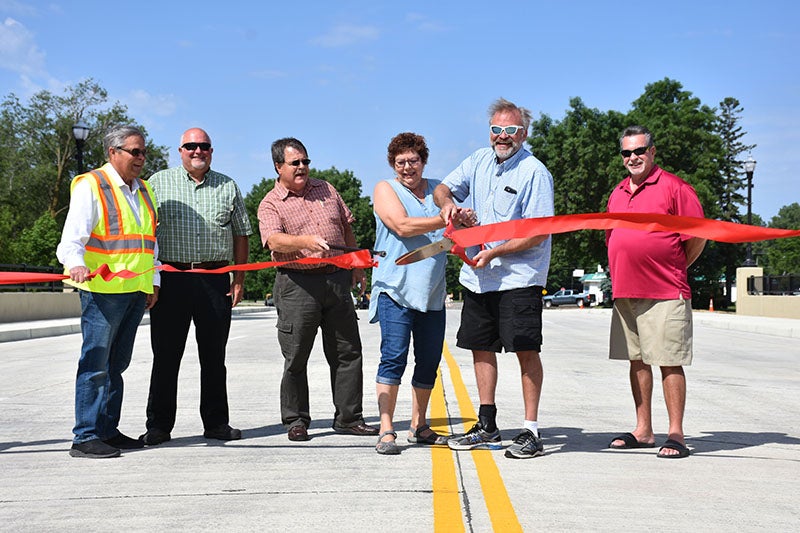Soil erosion program funded
Published 12:00 am Thursday, May 24, 2001
High chemical costs, higher fuel costs and, oh yes, wet fields that delay spring planting.
Thursday, May 24, 2001
High chemical costs, higher fuel costs and, oh yes, wet fields that delay spring planting.
All in a day’s work for Mower County farmers this spring.
While farmers look to the skies and ask "Who’ll stop the rain?" from delaying spring planting further, the Mower County Soil and Water Conservation District keeps its nose to the ground and asks "Who’ll stop the erosion?"
Answer: the Mower County Board of Commissioners.
The county board is going to bat again for farmers and the winners are multiple in this game, but the environment more than others.
Soil erosion is the enemy and the county board, working in concert with the SWCD, state of Minnesota and landowners will try to stop it.
The county commissioners approved $14,500 in funding to the SWCD for the construction of best management practices in controlling erosion.
"Every year, the SWCD receives an allocation from the state of Minnesota of $14,500 for soil erosion practices," explained Bev Nordby, the SWCD’s district manager. "With the heavy rains and the severe erosion, the county board recognized the challenges and approved matching the state funding for a one-year pilot."
Practices eligible for the state and county funding, include terraces, erosion and water control structures and waterways.
Projects are funded with 50 percent cost share dollars and 50 percent landowner cost with a cap of $4,000 per practice in cost share.
Erosion has a huge impact on the county’s rich fields for farming making erosion control a necessity. After all, agriculture is the main land use in Mower County and cropland exceeds 86 percent of the land with cash cropping very intensive.
Ephemeral erosion and sheet and rill erosion allow for perennial streams to be "very vulnerable," according to Nordby, to sedimentation damages and reduced water quality.
Nordby said there are cost share programs in place currently to assist landowners in constructing best management practices to prevent erosion in addition to the new one being implemented now.
"We have the federal program, Environmental Quality Incentive Program, that offers whole farm planning," she said. However, widespread use of the EQUIP program has limited use because of its complexity. That comes from being tied to a 5-year contract which must include several practices.
"Financially, many cannot participate," Nordby admitted.
That’s what makes the state cost share program so popular, according to the SWCD manager.
The program is funded through the Board of Water and Soil Resources and offers funding for single practices.
"Currently, through state cost share we receive a yearly allocation of $14,654 for conservation practices," Nordby said. "We receive a minimum of 12 requests every year without promoting the program."
The limited funding only allows for approximately 4 or 5 practices to be funded.
The funding is encumbered within a couple of months and requests continue to come with no other funding available.
With the state’s $14,654 and the county’s $14,654, the landowner matches the two amounts or contributes $29,308, making $58,610 available in a single year.
With a 5-year commitment, that total swells to $293,080 with the state and county’s matching $73,270 shares and landowners’ $146,540.
Grassed waterways or a natural drainage way in fields to prevent gullies from forming is a popular practice. "They can also serve as a filter absorbing chemicals and nutrients in runoff water," Nordby said, adding, "Waterways that are not eligible for federal funding would be eligible for state cost share funding."
Terraces are another best management practice that can be funded. The earthen embankments on a hillside stop the water flow and store it or guide it safety off the field.
Critical area seeding is another practice designed to protect a badly eroding area from soil erosion.
Also, there are erosion and water control structures or earthen or metal, concrete or other structures built across a drainage way to prevent gully erosion.
For more information about cost share on erosion control practices, call the SWCD at 434-2603.
Call Lee Bonorden at 434-2232 or e-mail him at lee.bonorden@austindailyherald.com.





